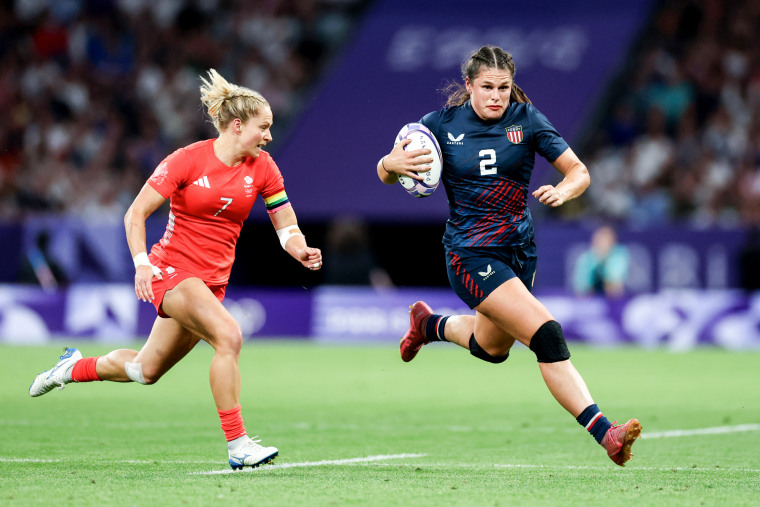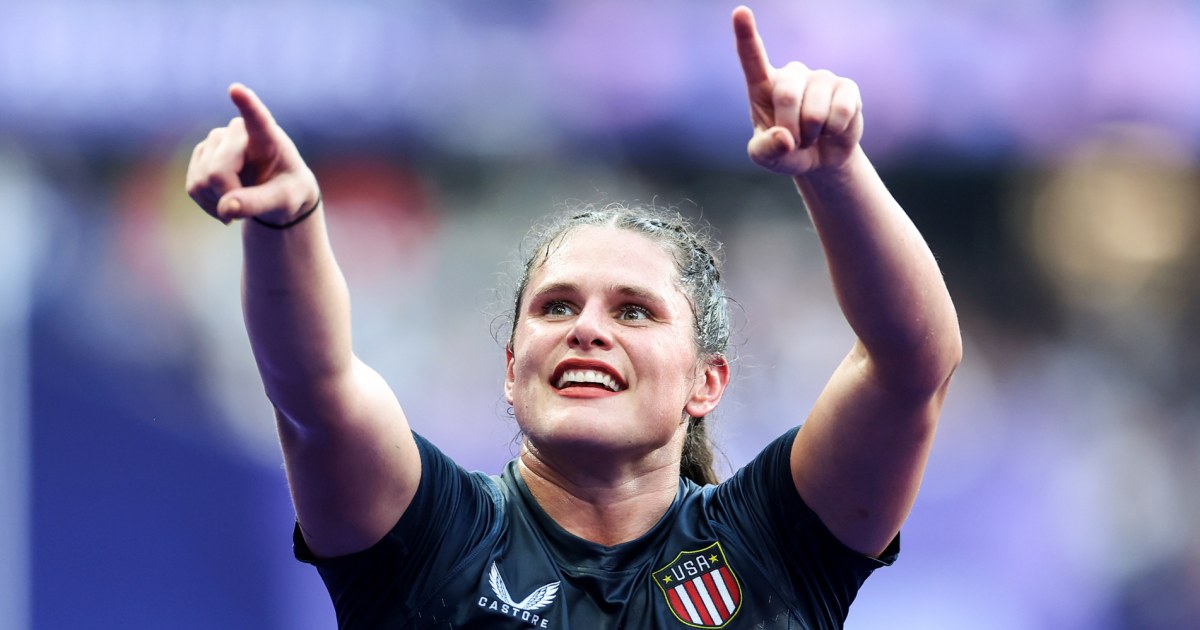Ilona Maher is having herself a time at the Paris Olympics. The 27-year-old rugby player just captured a bronze medal after Team USA’s improbable win in the finals seconds of Tuesday night’s match against Australia — the first medal ever for American women’s rugby sevens. But even before the win, Maher had become a burgeoning social media sensation. Footage of her stiff-arming opponents has drawn comparisons to Baltimore Ravens star Derrick Henry, and her impressive TikTok account has gone viral with videos highlighting an endearingly quirky and honest personality.
A consistent theme in Maher’s social media posts is her advocacy for body positivity, which is touted on her official Team USA profile.
A consistent theme in Maher’s social media posts is her advocacy for body positivity, which is touted on her official Team USA profile. Last week, she posted a reel on Instagram stating that “all body types can be Olympians.”
“As the Olympics officially start today, I want you all to take a look at all the different body types on display,” she said. “All body types matter, all body types are worthy, from the smallest gymnast to the tallest volleyball player, from a rugby player to a shot-putter to a sprinter. All body types are beautiful and can do amazing things, so truly see yourself in these athletes and know that you can do it, too.”

The reaction to Maher’s posts has been overwhelmingly positive, but she’s unsurprisingly had to deal with a few trolls commenting on her weight and Body Mass Index (BMI). One person in particular wrote, “I bet that person has a 30 percent BMI,” prompting Maher to respond directly with a candid message about her body. “I think you were trying to roast me, but this actually is a fact. I do have a BMI of 30 — well, 29.3 to be more exact,” she shared on TikTok. Maher noted that misperceptions about weight and athleticism are nothing new; in middle school, she received a physical that labeled her overweight.
Today, Maher is one of the best women’s rugby players in the world. The notion that her body is in anything but optimal shape is absurd.
BMI is also a famously flawed and inaccurate measure of health, a fact that rings even truer for athletes. This simple calculation uses weight and height to measure body fat, but doesn’t account for important factors like bone density and muscle mass. As a world-class professional, Maher has access to dietitians and medical experts, whom she says have told her it’s not a particularly useful measurement for athletes. In her TikTok post, Maher reiterates that she’s 5-foot-10 and 200 pounds — 170 of which is lean muscle. That gives her a body fat percentage of 15% — well below the 25-31% range considered healthy for average women who aren’t athletes.
Maher certainly doesn’t need me, or anyone else, to defend her body to random people on the internet (who, as she points out, did not just win a bronze medal in the Olympics). But if anything, the Games offer a rare opportunity to witness and celebrate a truly diverse range of body types, particularly among women. Gymnasts are not built the same as rugby players; weightlifters look dramatically different than swimmers. Multiple Olympians across the various sports have talked about body image and how harmful the narrow view of what constitutes healthy bodies can be, especially for young girls.
Gymnasts are not built the same as rugby players; weightlifters look dramatically different than swimmers.
Much of this conversation in recent years has centered around notions of what “feminine” bodies are supposed to look like; some female athletes have admitted that they avoid building muscle because they believe that looking overly bulky hurts their marketability.
But it should be noted that these conversations are by no means limited to women in sports. For years, ESPN the Magazine’s “The Body Issue” celebrated diversity in body types for men and women athletes alike. When Texas Rangers first baseman Prince Fielder appeared on the cover in 2014, his husky build stood in sharp contrast to other players who would be considered more traditionally fit. But Fielder deserved to be on that cover: A six-time All-Star, he was among the game’s most feared power hitters in his prime.
Thankfully, notions of what a healthy body looks like are changing, even as Maher’s comment section proves they certainly still exist. Events like the Olympics are the perfect time to call out and celebrate the athletes and body types that we don’t often get to see on an international stage. For her part, Maher just used her “big, broad, beautiful shoulders” to stiff-arm her way to the Olympic podium.

Leave a Reply